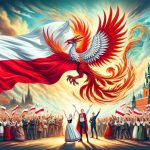
The relationship between Russia and Poland is complicated, with a lot of ups and downs over the years. They’ve had their share of fights and alliances, and these events have really shaped both countries. Let’s start way back in medieval times, where battles and partnerships were common. Then, there were big changes when Poland was divided among other countries, not once but three times, which really impacted the nation. World War II and the Cold War brought more challenges and tension. Today, their relationship is still complex, with diplomacy playing a big role.
Understanding the history between Russia and Poland helps us get why things are the way they are today. It’s not just about these two countries, but it also tells us a lot about Europe’s history. So, when we talk about Russia and Poland, we’re looking at a story of survival, changes, and how politics and culture shape a country.
Early Conflicts and Alliances
The history between Russia and Poland is a tale of both battle and partnership, shaping Eastern Europe’s political scene from the Middle Ages. Initially, as both nations were on the rise, they clashed and cooperated in their quest for territorial expansion and influence. A key battle in this saga is the Livonian War in the 16th century, where Poland and Russia competed for the vital Baltic region. This wasn’t just about land; it was about gaining a strategic edge in an area known for its economic and military importance.
But it wasn’t all conflict. There were times when Poland and Russia found common ground, joining forces when their interests aligned or when facing shared threats. These moments of alliance were as crucial as the battles, as they showed the possibility of cooperation amidst rivalry. Such early interactions between the two countries were not just random events; they were the building blocks for a relationship filled with ups and downs.
To understand the importance of these events, think of them as chess moves in a long game, where each decision—whether to fight or cooperate—could change the course of history. For example, during the Livonian War, gaining control over the Baltic wasn’t just about expanding territory. It was about controlling trade routes and asserting dominance in Eastern Europe. This war and others like it underscore the strategic thinking behind every conflict and alliance.
In a way, the relationship between Russia and Poland is a lesson in the complexities of international relations. It shows how countries can swing between conflict and cooperation, depending on their goals and the circumstances. For anyone interested in politics or history, the Russo-Polish dynamic offers a rich, detailed case study of how nations navigate their relationships over centuries, with each decision echoing through time.
In our discussions about history or international relations, it’s important to dive deep into these stories. They’re not just tales from the past; they’re insights into how the world works, showing us the delicate balance between rivalry and partnership that defines geopolitics.
The Partitions of Poland
In the late 18th century, the landscape of Eastern Europe underwent a dramatic transformation through a series of events known as the Partitions of Poland. These events, occurring in three waves in 1772, 1793, and 1795, saw the neighboring powers of Russia, Prussia, and Austria divide up Poland among themselves. This was not just a simple redrawing of borders; it was a complete removal of Poland as an independent nation for more than a hundred years.
The reason behind these partitions was Poland’s internal struggles and a political system that had become ineffective. The first partition in 1772 was relatively moderate, but the later ones in 1793 and 1795 were more severe, leading to the total dissolution of the Polish-Lithuanian Commonwealth. This series of events was not just significant for Poland and its neighbors; it had a profound impact on the whole concept of sovereignty and international relations. It showed how a country could be wiped off the map by more powerful neighbors if it became too weak internally.
The impact of the partitions extended beyond the disappearance of Poland. They significantly increased the land and power of Russia, Prussia, and Austria, altering the balance of power in the region. This was a clear example of how geopolitical strategies could reshape entire continents.
To understand this better, imagine a game of chess where one player’s pieces are slowly surrounded and captured by the opponents’ stronger pieces. Just like in chess, the strategic moves made by Russia, Prussia, and Austria during the partitions of Poland were calculated to enhance their positions on the European ‘board.’
In discussing these historical events, it’s essential to remember the broader implications they had on international politics, demonstrating the precarious position of states surrounded by stronger powers. The partitions of Poland serve as a stark reminder of the importance of a stable and effective internal political system to safeguard a nation’s sovereignty and independence.
World War II Aftermath
After World War II, the countries of Poland and Russia found themselves navigating a drastically changed world. The Potsdam Agreement reshaped Poland’s borders, taking away large areas in the east to give to the Soviet Union, while Poland gained lands to the west. This not only changed the map but also the culture and people of Poland, as many were forced to move, transforming the nation’s identity. At the same time, a government backed by the Soviet Union was set up in Poland, changing the relationship between Poland and Russia. This new government brought with it a mix of control, influence, and opposition that would shape the years to come.
Let’s break this down further. Imagine Poland’s map before and after the war. Before, it had territories stretching further east, but after, these were gone, absorbed by the Soviet Union. In exchange, Poland received lands from Germany in the west. This wasn’t just about land; it was about people. Imagine being told your home is no longer in your country and having to move. That was the reality for millions, altering Poland’s demographic makeup.
The change in government in Poland to a Soviet-backed regime is another critical piece. This wasn’t just a new set of leaders; it was a shift towards communism, under the watchful eye of the Soviet Union. It set the stage for a complex relationship between Poland and Russia, filled with both cooperation and tension. The echoes of these changes are still felt today, influencing how the two countries interact.
Understanding these events helps us grasp the delicate balance of power and identity in post-war Europe. Poland’s story is a vivid example of how borders and governments can change, but the legacy of such transformations continues to shape nations and their relationships long into the future.
Cold War Dynamics
During the Cold War, the relationship between Poland and Russia became more complex due to the worldwide conflict between the Soviet Union’s Eastern Bloc and the Western countries. This struggle included political, military, and ideological battles that affected both countries significantly. Poland, influenced by the Soviet Union, had its political and social systems reshaped by Moscow, altering its national identity and way of governance. During this time, Poland became a key battleground for the ideological conflicts of the Cold War.
The enforcement of Soviet-style communism in Poland not only worsened its relationship with Russia but also with Western nations, leading to a series of diplomatic and internal challenges. This situation highlighted the geopolitical struggle of the time, with Poland trying to find a balance between being independent and under Soviet control.
Let’s take a closer look at how this era affected Poland. The country’s government and social systems were heavily influenced by Soviet policies, which often clashed with the traditional Polish way of life and its aspirations for autonomy. For instance, the introduction of a centralized economy and the suppression of political dissent were stark departures from Poland’s historical trajectory. These changes led to several uprisings and a strong underground resistance movement in Poland, emphasizing the population’s dissatisfaction and resilience.
Furthermore, the Cold War era complicated Poland’s international relationships. On one side, its ties with Russia were strained due to the heavy-handed Soviet influence. On the other, its relationship with Western countries was also challenging, as Poland was seen as part of the Soviet sphere of influence, making it difficult to establish strong connections with the West.
Modern Diplomatic Relations
Since the end of the Cold War, the relationship between Poland and Russia has seen its fair share of ups and downs. This dynamic has been largely shaped by Poland’s move towards the West, joining organizations like NATO and the European Union, which stands in contrast to Russia’s aims in Eastern Europe. Key issues such as the security of energy supplies, military activities in the region, and conflicting views on history have added layers of complexity to their interactions.
Poland’s membership in NATO and the EU represents a significant shift towards Western alliances, which has been a point of contention with Russia. For example, Russia’s concerns over NATO’s expansion towards its borders have led to strained relations with Poland, who views the alliance as a cornerstone of its security.
Energy security is another critical issue, particularly Poland’s efforts to reduce its reliance on Russian gas. This move is part of a broader European strategy to diversify energy sources, but it directly impacts Russia’s influence in the region. The Nord Stream 2 gas pipeline, intended to transport Russian gas directly to Germany, bypassing Poland, is a case in point. Poland has criticized the project, arguing it would increase Europe’s dependence on Russian gas and undermine Ukraine’s role as a transit country.
Despite these challenges, there have been moments of cooperation between Poland and Russia, particularly in economic and security matters. For instance, both countries have engaged in trade, and there have been discussions on counterterrorism efforts. However, these instances of collaboration are often overshadowed by broader geopolitical tensions.
Conclusion
So, let’s talk about the long and tangled history between Russia and Poland. It’s like a rollercoaster ride of ups and downs, with their relationship swinging between fights and friendships, and everything in between. Think about it – they’ve had their fair share of battles, teamed up strategically at times, and even saw Poland getting divided up.
World War II hit Poland hard, and then there was the Cold War period that was pretty tense. Nowadays, the way Russia and Poland interact has changed, but all those past events still play a big role in how they get along (or don’t).
Understanding all these twists and turns is super important if we want to get the full picture of what’s going on between these two countries today. It’s like piecing together a puzzle that helps us see why Russia and Poland act the way they do towards each other.






Comments are closed.